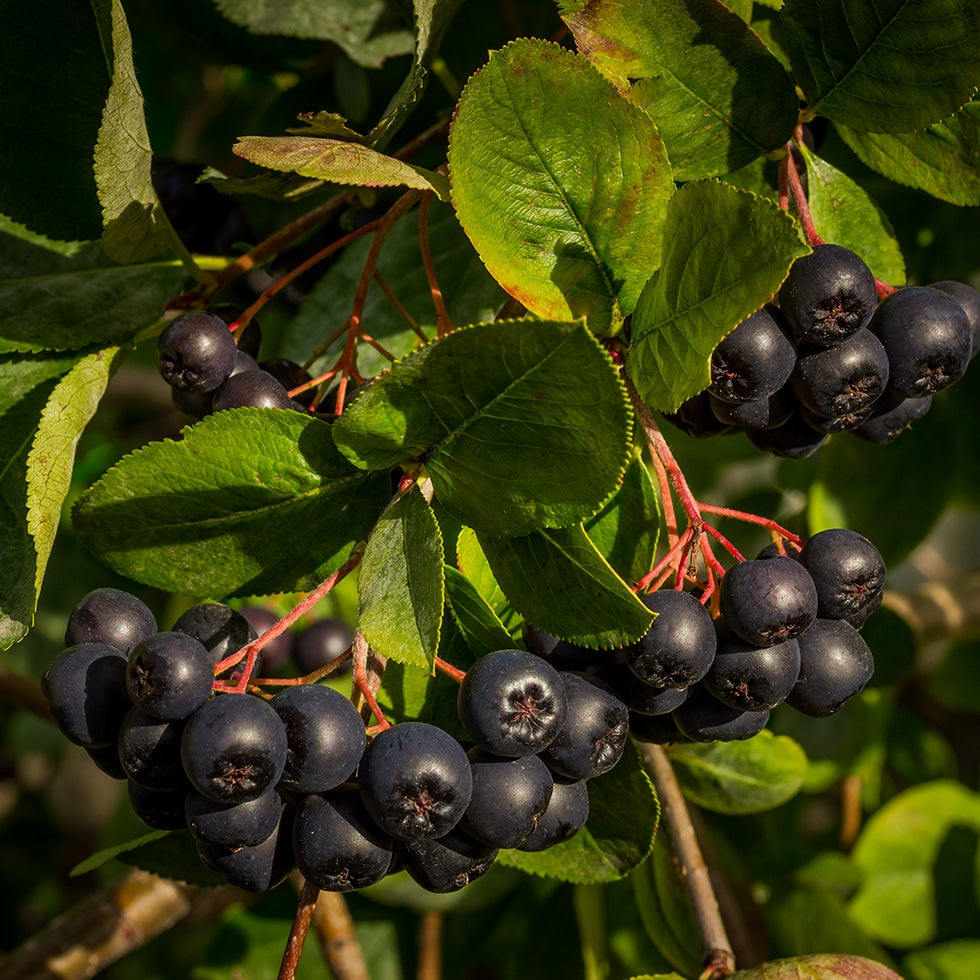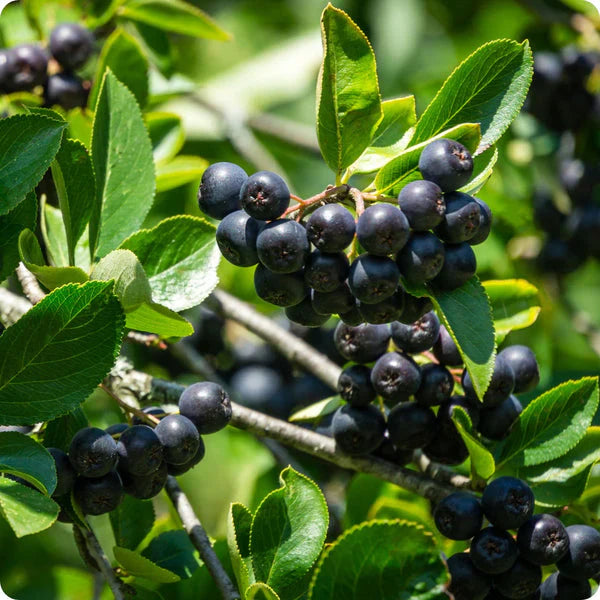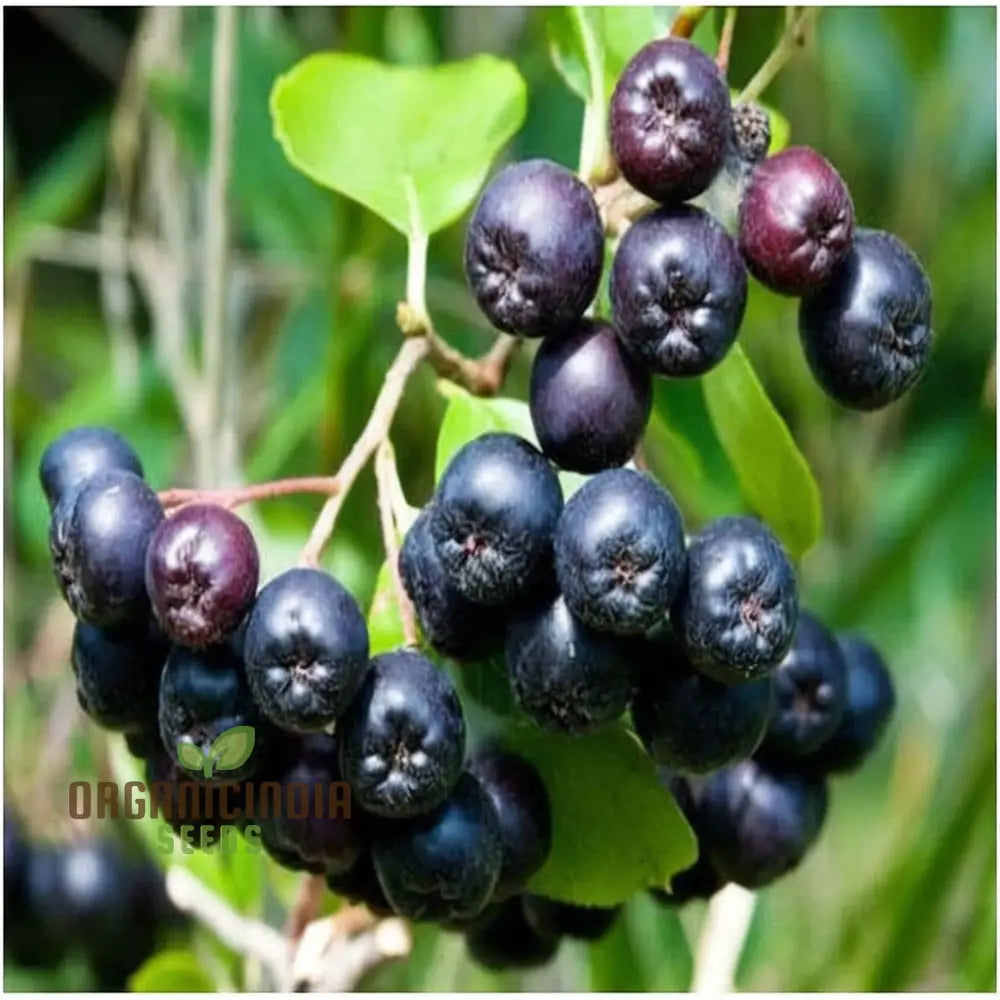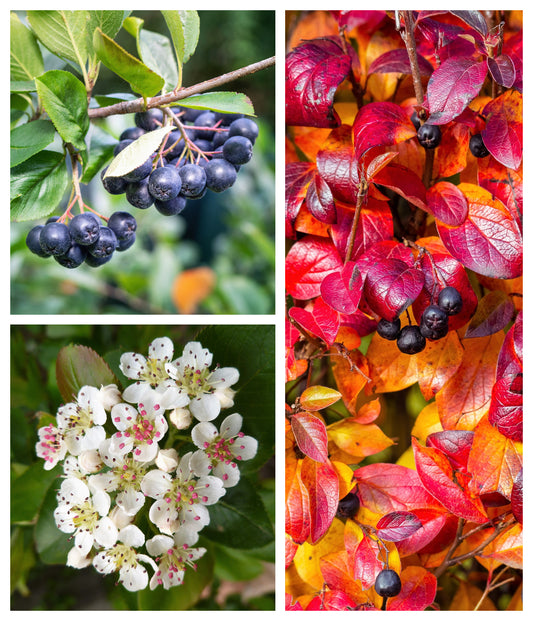







Free Shipping
Safe & Secure Payments
Black Chokeberry (Aronia melanocarpa) is a resilient, deciduous shrub known for its white spring blooms and glossy, dark purple-black berries. Native to North America, it’s an excellent choice for gardeners seeking ornamental beauty, edible berries, and low-maintenance growth. Perfect for natural hedges, pollinator gardens, and cold climates, the chokeberry adapts easily to different soil conditions and provides year-round appeal.
Cold Hardy: Thrives in USDA Zones 3–8, tolerating frost and poor soils.
Attractive Blooms: Produces clusters of fragrant white flowers in spring.
Nutrient-Rich Berries: Small black fruits high in antioxidants; suitable for home use and wildlife gardens.
Low Maintenance: Tolerant to drought, pests, and pollution.
Versatile Shrub: Ideal for hedges, screens, and natural landscapes.
Common Name: Black Chokeberry
Scientific Name: Aronia melanocarpa
Plant Type: Deciduous shrub
Growth Habit: Upright, spreading habit; 3–6 feet tall and wide
USDA Hardiness Zones: 3–8
Soil Type: Moist, well-drained soil; tolerates clay and sandy soil
Sun Exposure: Full sun to partial shade
Water Requirements: Moderate; water regularly during early growth
Bloom Time: Spring (white flowers)
Berry Season: Late summer to early fall
Foliage Color: Glossy green turning red-purple in autumn
Lifespan: Perennial
Non-GMO / Organic: Non-GMO seeds
Pollinator-Friendly: Attracts bees and butterflies
Seed Preparation: Cold stratify seeds for 3 months at 35–40°F (2–4°C) in moist sand or peat.
Sowing Depth: ¼ inch deep in a well-draining seed-starting mix.
Light: Provide bright, indirect light or partial sun.
Watering: Keep soil moist but not soggy during germination.
Germination Time: 60–90 days.
Transplanting: Move seedlings outdoors after the last frost.
Spacing: 3–5 feet apart for hedge or border planting.
Maintenance: Prune after fruiting to shape plants and remove old stems.
حدِّد الخيارات





